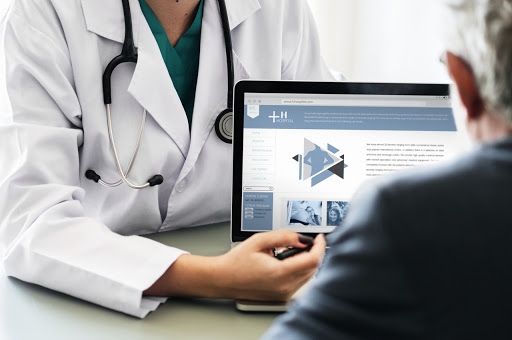Switzerland (Head Quarters)
IDR Medical Switzerland
Austrasse 95, CH-4051 Basel, Switzerland
T:
+41 (0) 61 535 1109
UK
IDR Medical UK
Unit 104 Eagle Tower, Eagle Tower
Montpellier Drive, Cheltenham, GL50 1TA
T:
+44 (0) 1242 696 790
USA
IDR Medical North America
225 Franklin Street, 26th Floor
Boston, Massachusetts 02110, USA
T:
+1 (0) 617.275.4465

How to Price Your Medical Device: A Step-by-Step Guide
Developing an effective medical device pricing strategy is one of the most critical business decisions a manufacturer will make.
Set the price too high, and you risk losing market share; set it too low, and you leave money on the table or even struggle to cover costs. In highly regulated healthcare markets like the US and Europe, medical device pricing is further complicated by reimbursement systems, procurement structures, and regional variations.
This article outlines a step-by-step approach to developing a medical device pricing strategy, incorporating medical device pricing market research to ensure informed decision-making at every stage.

Step-by-Step Guide to Setting a Medical Device Price
1. Define Your Value Proposition
Pricing is not just about what customers are willing to pay, it’s also about what payers (insurance companies, government health systems, hospitals) are willing to reimburse. Identifying the clinical and economic benefits of your device is crucial. How does it improve patient outcomes, reduce costs, or enhance workflow efficiency? A strong value proposition lays the foundation for your medical device pricing strategy.
2. Analyze the Competitive Landscape
Understanding how competing products are priced provides a reference point for setting expectations. Competitive analysis should include:
- Direct competitors and their medical device pricing strategies.
- The perceived clinical and economic value of their offerings.
- Market access strategies (e.g., tender-based pricing in Europe, GPO negotiations in the US).
3. Understand Market Access & Reimbursement Pathways
In the United States, medical device pricing is influenced by FDA approval processes, Medicare & Medicaid reimbursements, and negotiations with private payers. CMS (Centers for Medicare & Medicaid Services) determines reimbursement rates, which heavily impact medical device pricing strategy.
In Europe, CE marking allows market access, but each country has its own reimbursement system. In Germany, reimbursement is tied to DRG (Diagnosis-Related Group) codes, while in France, CNEDiMTS assesses reimbursement eligibility. The UK’s NHS and NICE play key roles in evaluating cost-effectiveness.
Engaging with payer advisors and reimbursement consultants can provide valuable insights into pricing feasibility and reimbursement likelihood.
4. Conduct Market Research & Price Sensitivity Testing
Medical device pricing market research helps ensure pricing decisions align with customer expectations and market realities. Key research methodologies include:
- Conjoint Analysis: Determines which product features drive value and what customers are willing to pay for them.
- Gabor-Granger & Van Westendorp Pricing Models: Assess price sensitivity by testing different price points to gauge willingness to pay.
- Stakeholder Interviews: Engaging with hospital procurement teams, clinicians, payers, and payer advisors to validate pricing assumptions.
- Pilot Pricing & Real-World Testing: Testing medical device pricing strategies in select markets before a full-scale rollout.
Based on research findings, multiple pricing models can be evaluated, including:
- Value-Based Pricing: Pricing based on the clinical and economic benefits a device provides. This requires strong health economic data and cost-effectiveness analyses to justify a premium price.
- Cost-Plus Pricing: A straightforward approach where price is calculated by adding a profit margin to the cost of production, distribution, and marketing.
- Tiered Pricing & Bundling: Offering different price levels based on customer segments or bundling devices with software, services, or consumables to maximize revenue.
- Subscription & Pay-Per-Use Models: Increasingly adopted in digital health, aligning pricing with hospital and clinic budget constraints.
Hospitals and healthcare systems purchase medical devices through structured procurement processes.
- US Perspective: Hospitals typically evaluate devices through Value Analysis Committees (VACs), while Group Purchasing Organizations (GPOs) and Integrated Delivery Networks (IDNs) influence purchasing decisions.
- European Perspective: Public tenders and government healthcare procurement dominate. Countries like Germany and France require careful consideration of reimbursement pathways and distributor medical device pricing structures.
- Roll out the pricing strategy with a structured Go-to-Market plan.
- Continuously monitor performance and adjust based on market dynamics and evolving regulations.
- Stay ahead of medical device price transparency trends, as governments and procurement bodies push for clearer cost visibility within and across countries.
Common Pitfalls & How to Avoid Them
- Setting Prices Too High or Too Low: Overestimating value can lead to rejection, while under-pricing erodes margins.
- Lack Understanding of Reimbursement Constraints: If a device isn’t reimbursed at the expected level, demand will suffer.
- Failing to Account for Regional or Customer Segment Variations: One price does not fit all, each market requires a tailored approach.
- Misjudging the Impact of Competition: A well-established competitor with aggressive medical device pricing can derail market entry.
- Overlooking Price Transparency Trends: Increasing regulations are driving greater medical device price transparency, requiring manufacturers to anticipate scrutiny and pricing comparisons across markets.
How We Can Help
At IDR Medical, we specialize in medical device pricing market research and consulting, helping global MedTech leaders optimize their pricing strategies. With years of experience working alongside major industry players, we provide data-driven insights, pricing model development, and strategic recommendations to ensure your device achieves maximum market success. Whether you're launching a new product or refining an existing medical device pricing strategy, our expertise can guide you through complex pricing challenges and market dynamics.
Navigating the complexities of medical device pricing requires deep market insights and strategic expertise. At IDR Medical, we help leading MedTech companies optimize their pricing strategies to maximize market access, profitability, and long-term success.
Get in touch today to see how we can support your pricing decisions and give your device the competitive edge it deserves.
Enjoyed this blog? Great! Take the next step and grab our eBook, titled “How to Price Your Medical Device”, for a deep dive into proven pricing methodologies.


